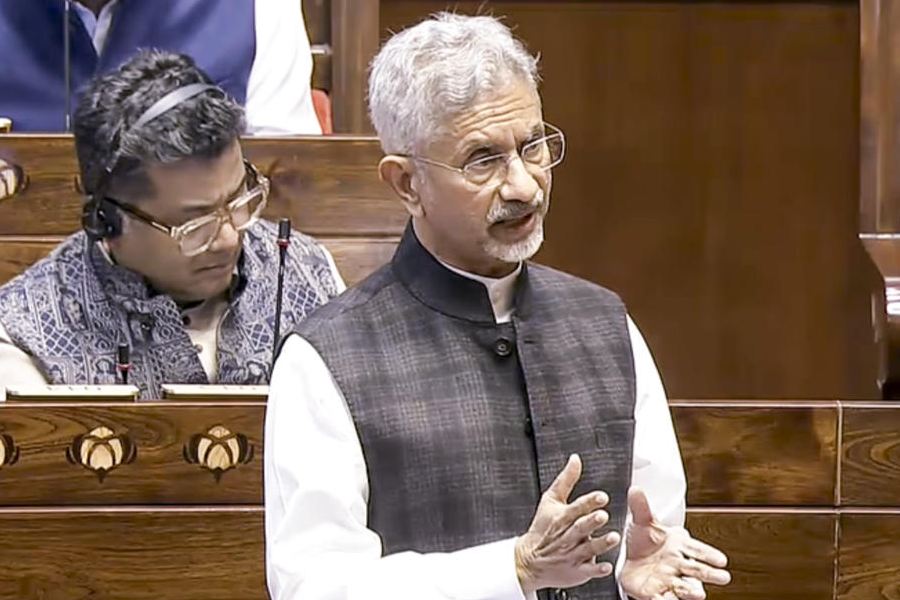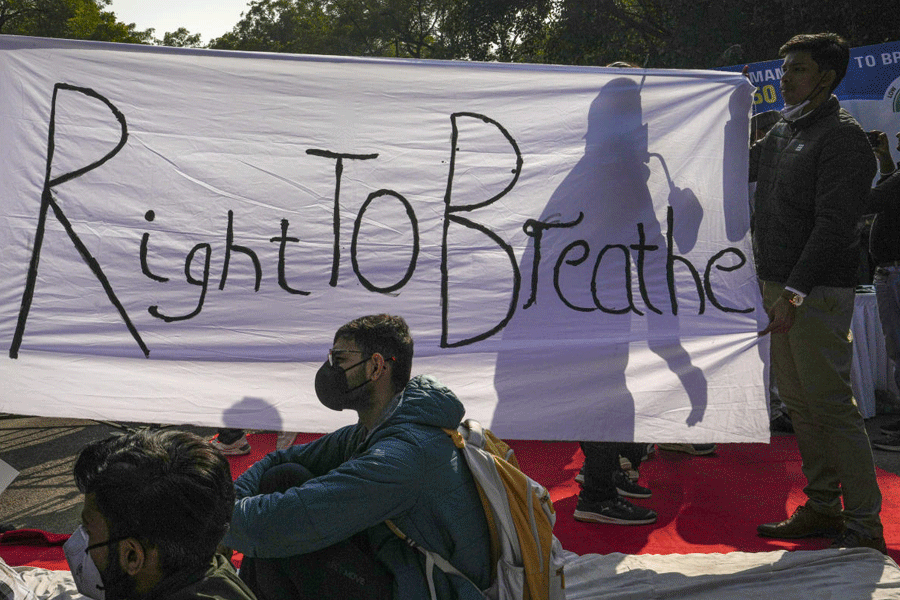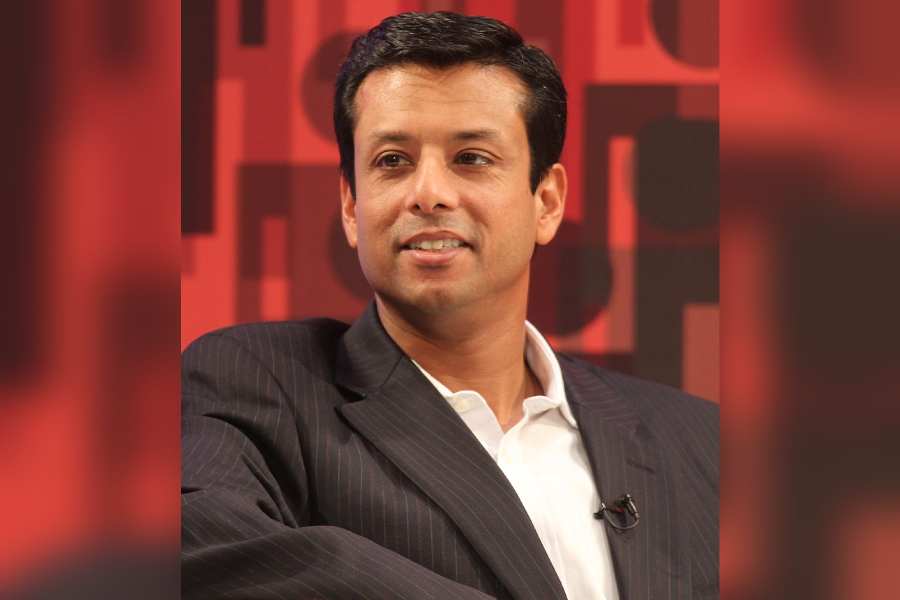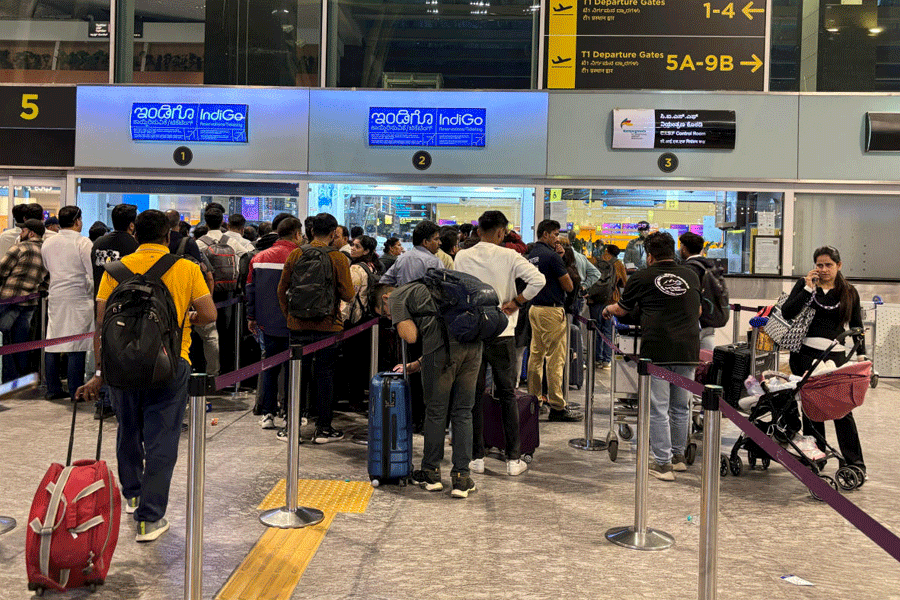|
|
The Calcutta Club presidential candidate who canvassed for votes with the plea that it was one of only three assets left to Bengalis — the high court and Kalighat being the other two — was wrong. Club, court and temple can be sacrificed but not the razzmatazz of the uniquely Bengali festivities that have just ended.
It’s easy, therefore, to understand the anger and anguish over the farce in Rome where, thanks to Italian officialdom, Durga Puja was an on-again- off-again event. The eternal city’s municipal authorities first demanded that the puja be relocated to another park and then, last Thursday, withdrew permission altogether. Apparently, something like that happened last year too. The emotional injury compounded by wasted time, money and effort — for no one can deny the monumental organization that the festival entails — must have been especially galling because it was abroad. Expatriate Indians are so much more fervent in their displays of patriotism and ritual. It’s almost as if they feel compelled to indulge in ostentatious demonstrations of Indianness to compensate for escaping the rigours of life in India.
My friend and former colleague, Kanchan Gupta, who broke the news, reports that vigorous lobbying by India’s ambassador, Arif Shahid Khan, ensured that permission was finally granted. At last count, Khan was due to inaugurate the Pujas a day late. But, clearly, all’s not well that ends well. Gupta’s lament that Hindus are “humiliated, harassed and hounded by city officials who happen to be pious Christians” suggests that Hindus are the latter-day Christians lurking in Rome’s catacombs and scratching furtive signs in the sand with their walking sticks. That image of persecution may seem plausible since Italy has gained notoriety in recent months for horrendous racist attacks on gypsies as well as on Indian and African immigrants.
The incident has provoked indignant demands on the internet for action against Christians and churches in India. It has also prompted fulminations against the United States Commission on International Religious Freedom, which calls itself an independent bipartisan federal government commission. The USCIRF criticized the killing of Muslims in Gujarat in 2002 and of Christians in Orissa last year and has placed India on its “watch list”. What was barely reported here was that the Indian government refused visas to a USCIRF team last summer. “India’s democratic institutions charged with upholding the rule of law, most notably state and central judiciaries and police, have emerged as unwilling or unable to seek redress for victims of the violence,” said the chairman, Leonard Leo. “More must be done to ensure future violence does not occur and that perpetrators are held accountable.” It’s a view that all reasonable Indians must endorse though some might regard it as presumptuous for foreigners to say so.
By that same token, immigrants anywhere are expected to abide by the norms of the country they have chosen to live in for their economic betterment. If they find bans on hijabs and turbans irksome, they are free to return to the country of origin. It’s pointless arguing they bring benefits to the host country for that is never the motive for migrating. However, Christian observance in India is an indigenous phenomenon. Even if Kerala’s Syrian church is not the world’s oldest, Christianity has been here long enough to be classified as Indian. It is too much part of the Indian scene to be compared to an occasional exotic Hindu rite in Rome.
The Italian officials who told the Puja organizers, according to Gupta, that the difficulties they raised were “retaliatory action against the persecution of Christians in India” did not grasp this difference. They also made the typical Western mistake of confusing a folk festival with a religious service. Durga Puja commemorates the epic battle between dharma and adharma with its profound moral symbolism. But most sarvojanin organizers are far more interested in the material dividend the event yields. The crowds are drawn by the competitive glitter, food stalls and general festive excitement. I have recorded before that the only remotely devotional comment I ever heard in many years of childhood association with what has become a major barowari puja was an elderly man asking the purohit mashai who Saraswati’s husband was. The purohit mashai didn’t know.
The report that Khan would inaugurate the Rome puja highlighted the fundamental difference between a social event and religious observance, not because he is Muslim but because he is a VIP. Here, Mao Siwei, China’s consul-general, had a similar role in some pujas. So did Sanjay Wadvani, Britain’s deputy high commissioner. Beth A. Payne, the American consul-general, told a Calcutta audience she had “participated” in a Kali Puja. These events gained in prestige from roping in foreigners, and diplomats at that. Similarly, politicians patronize pujas with an eye to the votes of lakhs of visitors. Mao Siwei was being diplomatic when he said, “Durga Puja is not only a religious festival but a popular cultural and social event.” Otherwise, he would have acknowledged that it is more social and cultural than religious and also included the adjective political.
The tension in some Maharashtra towns during last month’s Ganesh festival confirmed Mohandas Karamchand Gandhi’s belief that “those who say religion has nothing to do with politics do not know what religion is”. The nexus was broadcast when worshippers decorated the arch they erected on the route to the immersion with depictions of Shivaji killing Afzal Khan, the Bijapur sultanate’s commander, at the battle of Pratapgad in 1658. Some might hold that the killing portrayed did more dishonour than honour to the great Maratha hero, but such niceties are irrelevant to fanatical devotion to a cause. Shivaji and Afzal Khan being the two poles round which Maharashtra’s Hindus and Muslims still rally, the police removed the arch, prompting Ganesh worshippers to postpone the immersion and provoking violence and death.
The modest puja I remember was fun precisely because it was so far removed from any kind of spirituality. It was also an essay in self-help for we collected donations, borrowed flower pots and decorated the pandal for an amateur do-it-yourself occasion where only the images were bought and the priest hired. Now, of course, Durga Puja is an extravagant carnival epitomizing the triumph of commerce and advertising. That’s the trend everywhere. The founders of Calcutta’s august clubs, who spoke of trade with averted head and a handkerchief to the nose, would turn in their graves to see these establishments plastered with liquor advertisements like low drinking dives. Given half a chance, the worthies who have taken over the management would bedeck clubs with all the garish décor of puja pandals.
Two comments, both by foreign women, are pertinent.
One, the English wife of a prominent Bengali barrister once invited the wrath of her orthodox in-laws by suggesting in an article in the Amrita Bazar Patrika that it would be economical to pool resources and hold fewer barowari pujas, of which there were reportedly more than 3,000 this year. However, that otherwise sound advice overlooks the human element. Being basically secular, each puja highlights a well-defined local identity that flaunts creative skill and competitive pride. The community aspect dwarfs the devotional.
Two, what the American consul-general had to say about extending the puja effort bears reiterating in this crumbling city. Beth Payne was impressed by the “amazing annual feat of community commitment and organization” whereby neighbourhoods and clubs throughout Calcutta spend at least six months working out the logistics of their puja — “raising funds, holding meetings, deciding themes, organizing entertainment and then hosting safe and enjoyable pujas for a week”. It made her wonder “what type of city Calcutta could be if everyone devoted the other six months of the year to revitalizing the city”.
If only there was a way of finding out!












